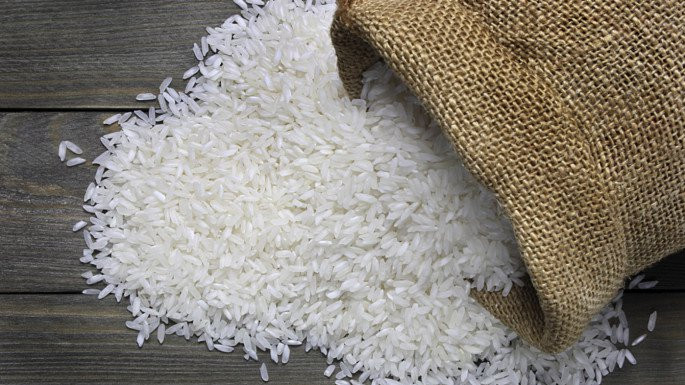Tags
Boro rice harvesting season brings smiles to farmers’ faces
Sultanul Islam
Supply of paddy determines price, no market syndicate exists.

Despite a significant rise in Boro rice production in the haor (marshy) region—thanks to favourable weather this year—the price of freshly harvested paddy has not dropped, due to the enhanced bargaining power of farmers, according to market insiders.
Traders and suppliers to rice mills at Dhaner Galla, the paddy trading hub in Ashuganj on the banks of the Meghna, noted that unlike previous years, the market has not been flooded with paddy this season. As a result, prices have remained steady during the harvest.
Traders and well-off farmers have been arriving at this market from the low-lying rice-growing haor areas in Kishoreganj, Netrokona, Sunamganj, Habiganj, and nearby districts, which together contribute around 10 per cent of the national Boro rice output. Given its proximity to Dhaka, Ashuganj in Brahmanbaria has grown into a major rice supply hub, rivalling those in the northern districts.
Farmers interviewed said they were selling only a portion of their harvest to meet immediate needs, choosing to hold on to the rest in hopes of securing better prices later.
Small traders and farmers alike stated they did not perceive the presence of a syndicate, as is often alleged, controlling the rice market. Rather, all stakeholders—farmers, traders, and millers—were engaged in free bargaining. The price of rice rose significantly following the last Aman season, the second most important rice crop after Boro, due to a shortfall in production caused by natural calamities such as flooding.
On 2 May, the selling price at the Ashuganj market was around Tk 1,000 per maund (approximately 40 kilograms) for coarse varieties, and up to Tk 1,250 per maund for finer ones. Traders supplying rice to millers said they purchased paddy in the growing areas for Tk 950 and Tk 1,175 per maund, respectively. The official estimated cost of producing one maund of paddy stood at Tk 800.
Officials stated that the country is expected to produce 2.26 crore tonnes of Boro rice this year—meeting government targets—compared to last year’s output of 2.10 crore tonnes. “Boro rice meets 58 per cent of national demand,” said an official of the Bangladesh Rice Research Institute.
Idris Miah (53), a farmer from Bajitpur, Kishoreganj, who harvested around 480 maunds of coarse paddy, reported about a 10 per cent increase in yield this year from six acres of land. He sold some of his paddy locally for Tk 950 a maund—compared to a production cost of roughly Tk 800—but received Tk 1,000 or more at Ashuganj market. “As paddy prices aren’t very high at the beginning of the harvesting season, I’ll store some of my crop to sell later when the price may rise,” he said, expressing hope.
Another farmer, Riton Miah (47) from Madan, Netrokona, was pleased to have achieved a yield of 90 maunds per acre, spending Tk 750 per maund. “Nowadays, many farmers are not compelled to sell all their produce at the start of the season. Although many of us are storing rice in expectation of a higher price later, a significant price hike like last year’s is unlikely, due to the higher output this time,” he opined.
When asked about the existence of a market syndicate, he replied that aside from the farmers, collectors (small traders), wholesalers, middlemen, and millers’ representatives all operate independently. “How can a syndicate function when everyone is bargaining?”
While standing on a boat, trader Gazi Sharif Khan explained that when farmers sell paddy for Tk 950 a maund, traders earn a profit of Tk 30 per maund and wholesalers around Tk 20, before selling it on to millers. “Whenever prices rise, farmers get to know immediately, thanks to mobile phones, and adjust their rates accordingly,” he pointed out.
Chand Miah, a representative of Haji Dana Miah and Sons rice mills in Ashuganj, said they source paddy directly from the rice-growing areas. “Favourable weather and the use of improved technology and inputs helped farmers achieve better yields this year. They are no longer forced to sell their produce at throwaway prices; they can even sell directly to us,” he said.
Shahin Alam, owner of a rice mill in Sohagpur, Ashuganj, was purchasing almost 4,000 maunds of rice per day, at an average of Tk 1,050 for coarse rice and Tk 1,250 for finer varieties. “There’s a risk of a shortfall in paddy supply, as many farmers are shifting focus towards more lucrative cash crops like vegetables,” he noted.
Reflecting on the Boro rice yield and price scenario, Dr Mizanur Rahman, Professor of Agronomy at Sher-e-Bangla Agricultural University, said that despite a slight rise in production costs, yields may exceed targets owing to favourable weather conditions. “Marginal farmers are receiving better prices, aided by the government’s increased procurement rate for purchasing half a million tonnes of paddy,” he added.
Explaining the gap between paddy and rice prices, he said that since producing one kilogram of rice requires 1.5 kilograms of paddy, and with around 15 per cent profit added, rice prices should range between Tk 65 and Tk 80 per kilogram for different varieties. “Such incentives will encourage farmers to grow sufficient quantities of paddy to ensure food self-sufficiency.”
https://www.tbsnews.net/economy/corporates/boro-rice-harvesting-season-brings-smiles-farmers-faces-1141091Published Date: May 15, 2025






